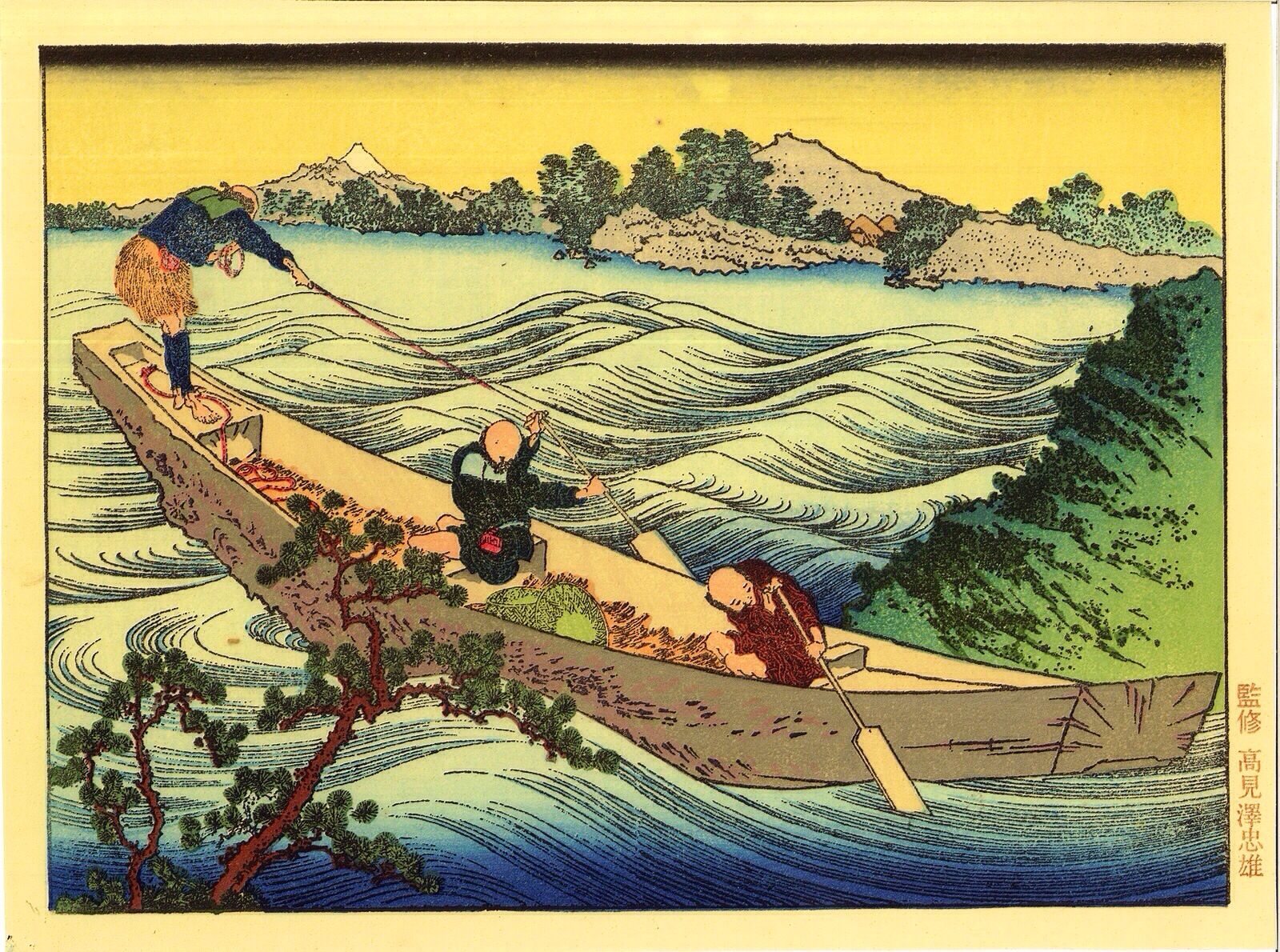In the realm of Japanese art, the name Katsushika Hokusai shines brightly, casting a legacy that transcends time. Renowned for his mastery of ukiyo-e, the art of woodblock printing, Hokusai’s creations have become iconic representations of Japanese aesthetics. In this exploration, we delve into the enchanting world of Hokusai’s Japanese woodblock prints, tracing the artist’s genius and the enduring impact of his timeless creations.
The Great Wave off Kanagawa: An Icon of Artistic Mastery
Undoubtedly, the most famous of Hokusai woodblock prints is “The Great Wave off Kanagawa.” This iconic image, part of the series “Thirty-Six Views of Mount Fuji,” captures the raw power of nature with Mount Fuji in the background and a colossal wave threatening boats in the foreground. The dynamic composition and meticulous detailing exemplify Hokusai’s ability to infuse energy and emotion into his works.
Thirty-Six Views of Mount Fuji: A Panoramic Journey
Hokusai’s fascination with Mount Fuji extended beyond “The Great Wave.” The “Thirty-Six Views of Mount Fuji” series showcases the mountain in various seasons and from diverse vantage points. Each print is a masterclass in composition, color, and atmospheric perspective, reflecting Hokusai’s profound connection to the natural world.
Hokusai’s Manga: A Treasury of Sketches and Insights
Beyond traditional woodblock prints, Hokusai’s “Hokusai Manga” stands as a collection of sketches that provide a glimpse into the artist’s creative process. These lively and whimsical drawings cover a wide range of subjects, from landscapes and animals to everyday life and mythical creatures. “Manga” in this context refers to a sketch or humorous image, predating the contemporary understanding of manga as a form of comic art.
Breathtaking Landscapes: Hokusai’s Views Beyond Fuji
While Mount Fuji became a recurring motif, Hokusai’s repertoire extended to breathtaking landscapes capturing the essence of different regions in Japan. His prints depict serene lakes, charming villages, and picturesque countryside scenes, demonstrating a keen eye for the beauty inherent in the diversity of Japanese topography.
Birds and Flowers: Nature’s Elegance in Woodblock Form
Hokusai’s fascination with nature extended to the genre of kacho-e, which translates to “pictures of birds and flowers.” In these woodblock prints, Hokusai captured the grace and vibrancy of various bird species and flowers. Each print is a delicate celebration of the natural world, combining precision and artistic flair.
Hokusai’s Influence on Western Art: Japonisme
Hokusai’s woodblock prints, along with other ukiyo-e artists, had a profound impact on Western art during the 19th century. The movement known as Japonisme saw European artists, including Van Gogh and Monet, incorporating Japanese artistic elements into their works. Hokusai’s compositions, use of color, and innovative perspectives left an indelible mark on the evolution of Western art.
Legacy and Cultural Impact: Beyond Centuries
Hokusai’s legacy extends far beyond his lifetime. His woodblock prints continue to captivate art enthusiasts globally, and his influence reverberates in contemporary art, design, and popular culture. The distinctive style and evocative themes of Hokusai’s prints remain a testament to the enduring power of Japanese artistic tradition.
Conclusion:
Katsushika Hokusai Japanese woodblock prints are not mere artworks; they are windows into the soul of a nation, capturing its landscapes, culture, and spirituality. Hokusai’s ability to infuse life into wood and ink has left an indelible mark on the world of art. As we immerse ourselves in the enchanting realm of Hokusai’s prints, we are transported through time, witnessing the beauty, dynamism, and eternal appeal of Japanese artistic expression.

